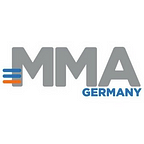Why Germany’s top mobile marketing opportunities and challenges are the ones to watch
Timed to the official launch of the MMA Germany Moravia, a thought leadership blog, spoke with Daniel Rieber — mobile marketing authority, VP of Marketing at adsquare, and Vice-Chair of MMA Germany — about the opportunities and challenges of mobile marketing for the German market.
Tell us about your work in the German mobile marketing space and the launch of the German chapter of the MMA.
I started my career in a market research agency, where I was in charge of media usage and mobile ad effectiveness studies. Today, I am vice president for marketing at adsquare, a global mobile data platform headquartered in Berlin. Alongside this, I am vice chair for mobile for BVDW, the German trade association for companies in the field of digital marketing. In addition, I give seminars and workshops for marketers. I am also one of the co-founders of the German chapter of the MMA.
Mobile marketing has evolved heavily. We want to give German companies a new platform for engagement. The MMA is a globally-known trade association with the goal of accelerating the transformation and innovation of marketing through mobile. With the founding of the German chapter, we help to make the German market more easily accessible to international companies, and at the same time help German companies roll out their own innovations globally, tapping into the MMA’s huge international community.
Which sectors have seen the greatest impact from the growth of mobile marketing?
I have been working in the mobile marketing space for eight years now, seeing it evolve from a niche to a mainstream channel. The main driver was, of course, the explosion in media usage. A recent study from GfK, Germany’s largest market research institute, says that in 2016, 68 percent of private internet usage occurs on smartphones.
The smartphone has become the connector between customers’ digital and physical worlds. Surely, the retail sector was the first to experience the disruptive power of mobile, because customers always have their mobile phones with them — even when shopping. But statistics show that big platforms like Facebook, Whatsapp, Instagram, and Snapchat dominate mobile usage.
Additionally, there are a lot of single-purpose apps — both from international and German companies. Apps like DriveNow (a joint venture between BMW and Sixt) for car sharing, DB Navigator for train travel, Komoot for hiking, Wunderlist for tasks, and of course news apps — these are part of the mobile lifestyle of German users and the smartphone is at the very center of the development.
Just think about connected cars, smart homes, or the Internet of Things. In all cases, mobile is the key accelerator of the digital transformation. Literally every industry is or will be affected by it, so we all need to be aware of the opportunities it provides.
What are the three most significant trends to emerge in mobile marketing? How has Germany responded, specifically?
The three mega trends that have developed are location-based marketing, mobile video, and social media. Knowing users’ locations enables contextually-tailored services and advertising; video is a strong branding channel; and social media brings together companies and consumers in an effective way.
These global trends have made mobile the number one marketing channel for brands.
In Germany, mobile marketing has evolved quickly over the last couple of years, with new devices, innovative apps, and explosive media usage. The German market is now a mobile marketing powerhouse. Germany is ranked the fifth largest mobile advertising market in the world and the second-largest market in Europe. According to a forecast by research firm eMarketer, Germany will reach $2.56 billion (EUR 2.2 billion) in mobile ad spending this year.
There are some challenges, however. The German market is known for slow adoption. Innovators need to put a lot of effort into breaking through and building up the trust to move marketing budgets. In addition, the privacy regulations are among some of the strictest in the world; in many cases, foreign companies have to adjust their products before entering the German market. As a result, trends like mobile video and location-based marketing have been adopted with delay.
But German marketers are catching up, thanks to companies that embrace innovation. Just take for example the founding companies of MMA Germany: SAP XM, Telefonica Germany, Smaato, adsquare, the Coca-Cola Company, Facebook, Google and Unilever.
What role do you see translation and localization playing in Germany?
The culture of most European countries, including Germany, is that companies prefer working with other companies from the same country. In addition, most of the events and market development materials are in German, making it difficult for non-German-speaking companies to participate. (The German chapter of the MMA communicates completely in English to make our assets accessible for everyone in the industry.)
Still, Germany has its own culture, language, and market characteristics. As shown by the heavily-discussed ad blocker situation, users don’t want intrusive and non-relevant marketing on their most personal device. Communicating to German consumers requires a level of sensibility and understanding of their behavior and culture.
But done right, mobile marketing can be a very powerful tool for both brand communication and performance marketing. Working with localization experts can help global companies address the German market in a more credible and efficient way.
THIS INTERVIEW ORIGINALLY APPEARED AT http://info.moravia.com/blog/das-handy-how-germany-wins-fails-at-mobile-marketing
